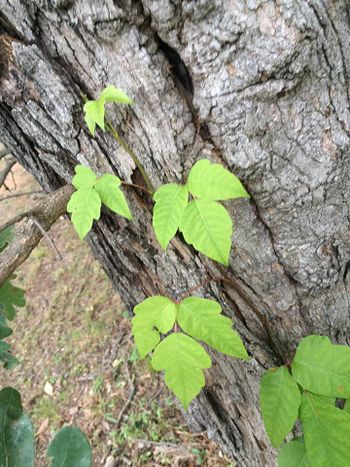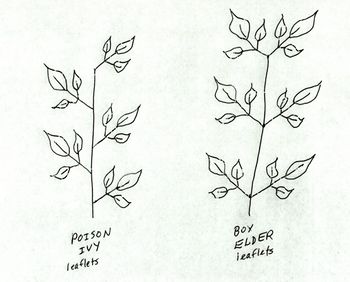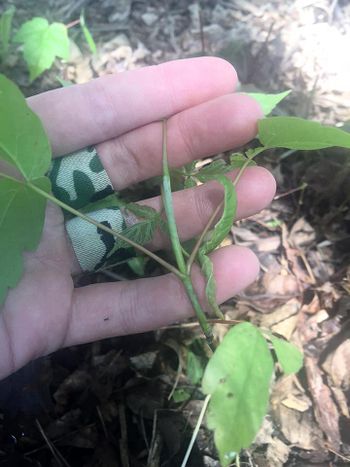Poison ivy
Poison ivy (Toxicodendron radicans) is a dangerous-to-the-touch climbing vine growing widely throughout eastern Canada and the United States, Mexico and Central America, Bermuda and the Bahamas. All parts of the plant--roots, stems and leaves--are highly toxic to most people due to the presence of Urushiol, a clear liquid oily compound which causes a persistant and painful rash on most people. The plant is deciduous but is still dangerous even in winter when leaves are gone because the stems on the sides of trees still can spread urushiol onto skin or clothing when touched. Dogs or cats can get urushiol on their fur from running through bushes outside, and then people can get the rash later just by petting the animal. The contact dermatitis caused by usushiol can spread when a person scratches the itching areas and then touches another part of the body, and can result in blindness if spread onto the eyes.
Poison ivy is not a true ivy (Hedera), but rather a member of the cashew and pistachio family (Anacardiaceae). T. radicans is commonly eaten by many animals, and the seeds are consumed by birds and spread by means of their droppings, which causes the plant to spread easily. The plant is regarded as a stubbornly persistent and unwelcome weed.
There are two other variant species: Toxicodendron rydbergii (western poison ivy found in Canada and much of the US except the southeast) and Toxicodendron orientale (Asian poison ivy, found in East Asia).


